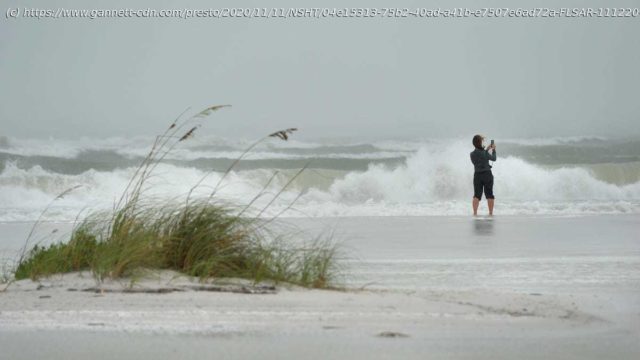In the past 24 hours, Tropical Storm Eta came to a fork in the Gulf of Mexico and took it, decisively tracking quicker and closer to Florida than earlier forecasts.
In the past 24 hours, Tropical Storm Eta came to a fork in the Gulf of Mexico and took it, decisively tracking quicker and closer to Florida than earlier forecasts. On this faster path, Eta will cross North Florida early on Thursday, spreading gusty winds, brief heavy rain, and coastal surge to portions of the Florida Gulf Coast. Per the 4 p.m. NHC advisory, maximum sustained winds in Eta have dropped to 70 mph, with the center of circulation located about 75 miles west-southwest of St. Petersburg, moving just east of north at around 12 mph. Overnight, Eta’s center jumped northeast due to a powerful convective burst, which briefly lifted it back to Category 1 hurricane intensity. As I mentioned yesterday, Eta’s track forecast was closely tied to how much it strengthened into Wednesday. Tuesday’s overnight round of intensification and the eastward reformation of the center early on Wednesday allowed Eta to connect with the strong steering currents associated with a dip in the Jet Stream over the east-central U.S. These upper-level winds will therefore accelerate Eta north and northeast through the day on Thursday, much in-line with the faster and stronger scenario laid out in this column yesterday. Eta will reach the Florida Gulf Coast in the vicinity of Cedar Key around daybreak on Thursday, or perhaps slightly farther north near Steinhatchee with faster weakening. Shortly after peaking early on Wednesday as a Category 1, Eta lost most of its intense convection as increasing southwesterly shear brought an incursion of dry air into the core of the hurricane. Since then, more modest convection has been pulsing and fading, mostly north and east of the center, while the low-level center itself is exposed.
Home
United States
USA — Science Eta forecast: Breakdown of Florida impacts after latest hurricane season twist






